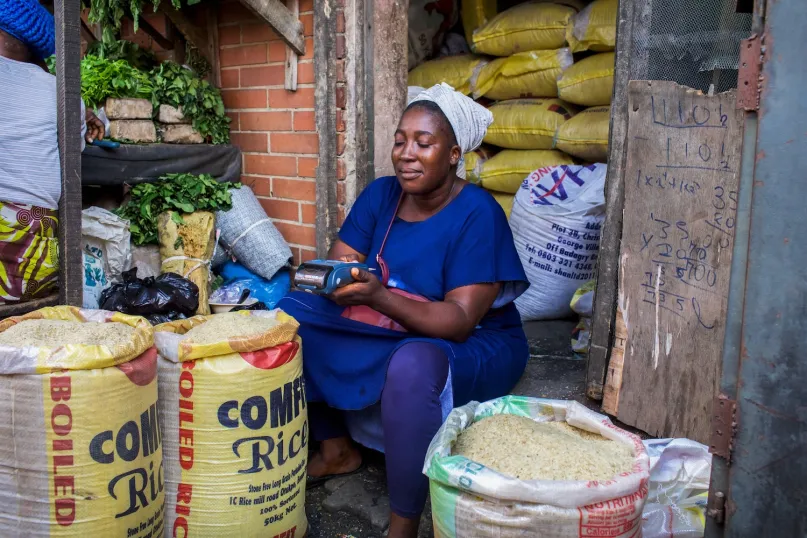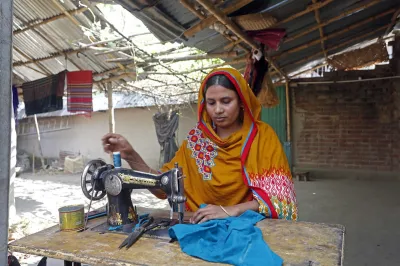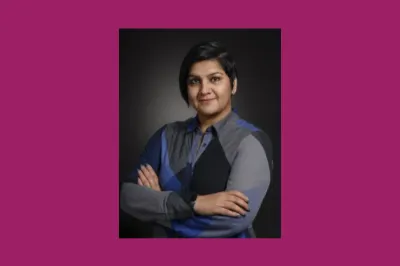Measuring WEE: Insights from #FinEquity2024

The ability to measure women’s economic empowerment (WEE) is key for understanding how financial inclusion interventions impact women and what works and what does not in promoting WEE through financial inclusion. Financial service providers, market facilitators, researchers, and funders are measuring WEE or aspects of WEE in a variety of ways. While the core elements of WEE generally include access to/use of resources, the exercise of agency, and economic achievements, measuring these multi-dimensional aspects in a standard manner remains a challenge.
The #FinEquity2024 Annual Convening brought together members of the women’s financial inclusion community to share approaches, frameworks, and lessons learned from ongoing initiatives to measure WEE in the context of financial inclusion. This discussion was complementary to FinEquity’s ongoing efforts to test and validate a set of indicators to measure WEE in financial inclusion, including a peer learning process (the Co-Lab).
Member insights
Gareth Davies of Tandem, framed the conversation by sharing this comprehensive guide written with Joanna Ledgerwood, a FinEquity Technical Advisory Committee member, with a conceptual model defining the core concepts of the three A’s (Access, Agency, and Achievements), underpinned by a broader set of structural factors and institutions. The model was followed by a five-step methodology that any intervention can use to measure WEE and a hypothetical example of what an empowerment pathway for a digital financial services intervention could look like. This pathway outlines how interventions predict the WEE results they expect to see from their projects and the processes or steps they believe will lead to these outcomes.
The guide emphasizes that creating this pathway allows a project to test the assumptions and hypotheses underlying these causal mechanisms and focus measurement on the elements of WEE that can be impacted by the interventions, as well as identify where there may be barriers to empowering women. Other key points in the guide, which were echoed throughout the discussion, were that while all three A’s need to be included in the pathway, measuring the three A's is not a linear process. Additionally, the pathway needs to be evidence-based and should include both quantitative and qualitative indicators. The guide also calls out the particular challenges with measuring subjective indicators, like self-confidence, and suggests combining them with more objective indicators. While the guide does not provide a definitive set of WEE indicators, it does share example indicators, as well as serval strategies on how to calculate indicators and analyze the indicators.
Rath Mani-Kandt shared CARE’s experience developing a measurement framework for STRIVE Women, a program focused on women-led MSMEs, and indicators to measure financial resilience, confidence and control, and quality of life. These indicators outlined in the framework below, are being tested in the STRIVE program. In the process of developing their framework and indicators, CARE analyzed many existing financial health frameworks such as those created by the Financial Health Network and Center for Financial Inclusion. CARE’s framework for transformative change seeks to go beyond agency by designing better structures (norms, policies, procedures) and relations (inter-household, social networks, and between market actors). Their indicators not only look at business growth and financial resilience, but also measure time use, stress, improved control over financial resources, and decision-making.
Justin Archer of Women’s World Banking (WWB) shared their WEE framework, adapted from the work of Martha Chen, which examines material change, cognitive change, relational change, and perceptual change. After developing a theory of change for each project, WWB draws their indicators from a list of those indicators that apply to the type of intervention (credit, savings, remittances, etc.) Lessons learned in applying their framework include the value of mixed-method studies. Quantitative research is helping WWB to answer the “how” and “why” of an intervention’s impacts and can be used in contexts that are not conducive to quantitative impact evaluations. While they require triangulation, the cost of qualitative research is on par with quantitative surveys. Another lesson and recent addition to WWB’s indicators include a focus on self-confidence in using financial products and managing finances, goal setting, and satisfaction with their financial situation.
Additional insights came from a WEE-DeFine study, carried out by Rachel Heath and Emma Riley, incorporated several indices on financial control, social inclusion, and household decision-making into the measurement of WEE in a randomized experiment with BRAC Tanzania microfinance clients using mobile money for loan repayments. Their study examined whether digital financial services contribute to improved financial control, women’s empowerment, and overall welfare. They used these indices to gauge impacts, both positive and negative. The study concluded that digital tools, like mobile money, can increase women’s control over their finances and their ability to make decisions at the household level, there by empowering the women.
Conclusion
These efforts support FinEquity's ongoing work to test and confirm a group of indicators for measuring Women's Economic Empowerment (WEE) in financial inclusion projects. They build on a theory of change and a preliminary set of indicators created by a core group of over 20 organizations focused on WEE measurement (outlined in this background paper). This process, called the Co-Lab, involves peer learning to determine which indicators are practical to measure and to share the lessons learned. The Co-Lab partners provided feedback through a questionnaire developed with Innovations for Poverty Action, based on the enumerators' experiences and field testing with female clients. Partners in the Co-Lab include Women’s World Banking, Village Enterprise, MEDA, People’s Pension Trust, and ACCION partners BancoSol, Dvara, and Annapurna.
Stay tuned for forthcoming guidance on how to use the WEE measurement questionnaire and calculate the indicators. FinEquity will also host a webinar to share this guidance and lessons from the Co-Lab partners in their pilots.


